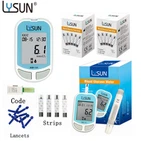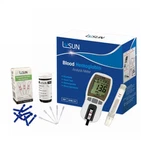The main difference between wet and dry chemistry analyzers lies in their operation, analysis methods, and overall usage. Let's delve into the specifics of these differences.
Wet chemistry analyzers primarily rely on wet chemical reagents to perform their analysis. These reagents are typically liquids that undergo a chemical reaction with the sample to produce a measurable change. Wet chemistry analyzers are often used in laboratory settings where precision measurements and advanced equipment are required. The analysis process involves precise weighing, mixing, and reacting of samples with various reagents. It usually requires skilled personnel and often takes a considerable amount of time to complete.
On the other hand, dry chemistry analyzers utilize dry chemical reagents that are often deposited on a film or particle support. These dry reagents eliminate the need for solvents or other liquid reagents during the analysis process. The dry chemistry analyzer is typically smaller, more portable, and easier to use compared to its wet counterpart. It provides a fast and simplified method of chemical analysis without the need for laborious sample preparation or complex laboratory equipment. This makes it more suitable for on-site testing or emergency situations where prompt results are essential.
In terms of analysis methods, wet chemistry analyzers often use colorimetric, fluorimetric, or electrochemical techniques to measure the resulting product or change produced by the chemical reaction. These methods are highly accurate but require precise handling and calibration of instruments. On the other hand, dry chemistry analyzers rely on specific reactions between the dry reagent and the analyte to provide quantitative or qualitative results. This approach often requires less sophisticated instruments and provides a more simplified analysis process.
Wet and dry chemistry analyzers differ in their operation, analysis methods, and ease of use. Wet chemistry analyzers are typically used in laboratories and require skilled personnel for precise measurements, while dry chemistry analyzers are more portable and suitable for on-site testing due to their simplified operation and fast analysis time. The choice between the two depends on the specific application, requirements, and available resources.




